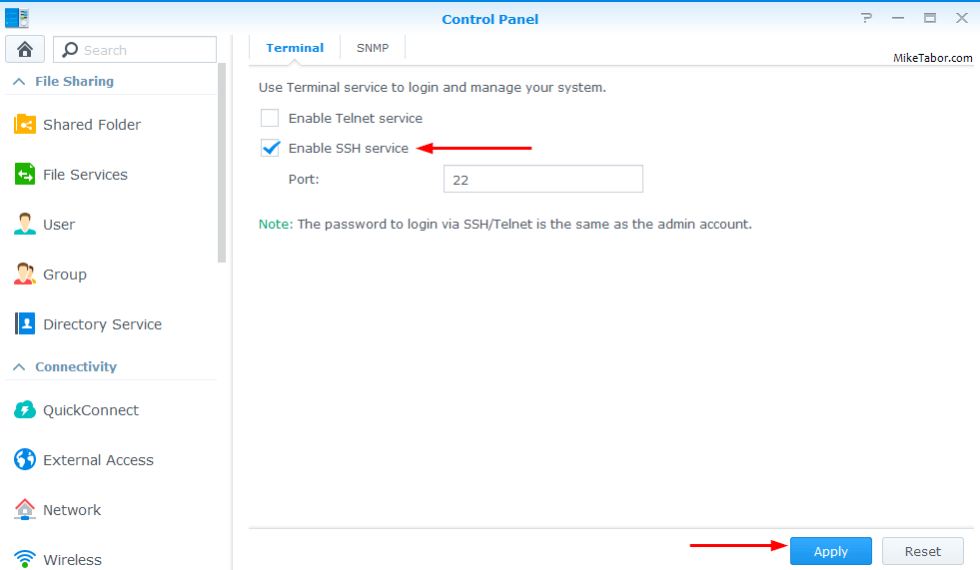

Mount -t cifs //workstation/share /work -o iocharset=utf8īecause your SSH copy or rsync process is typically run as root, you may experience 'Access Denied' messages with users writing to directories that have been created as part of this job.
Ssh copy to nas mac#
When this garbling happens, your directory will also be unlistable from a Mac (tested on 10.9) over AFP or SMB.
Ssh copy to nas movie#
If you have any kind of foreign characters in your filenames (for instance, an accented letter in a movie title), you want to mount the cifs share with the UTF-8 option as shown below, otherwise the mount will give you a garbled character when doing the copy/rsync. See also this post for an alternative method of data transfer between Linux systems, such as unRAID. This may be corrected with chmod command, but I found it better to avoid this altogether by sticking to the Explorer in Windows. Also, the cp command may set all file attributes to system and hidden, so the files don't show up in Windows Explorer. The Linux commands either skip the whole file or directory, or replaces the "strange" letter with an underscore. Open the SSH server configuration file for editing: sudo vim /etc/ssh/sshdconfig.
Log in to your NAS using ssh: ssh -pRsync -av -stats -progress /work/ /mnt/disk1/Ĭaution: If you have directory or file names with non-English characters, commonly found in titles and names for media files from European and South American countries, I would recommend to use Windows Explorer. So you should be able to skip this and jump to 'Generate an SSH Key'. u can setup rsync on the wd cloud or if the older nas is linux based.

If you transfer files and exit the program, it will still transfer files in the background. mnt/user/)Įdit: Another option is to use rsync to get speed/progress information: The easiest way to transfer without ssh / command line is using the WD My Cloud Desktop App, its like a file explorer for your WD drives. (Of course you can copy from the workstation share to any disk/share. Type the above command in your terminal and replace user and remote-host with your username and the hostname/IP of the. You can do this with the ssh-copy-id command: ssh-copy-id -i /.ssh/idrsa.pub userremote-host. Only the public key is copied to the server. Now that you have created your SSH keys, you need to add the public key to your remote server.
Ssh copy to nas password#
The copying may ask for a password or other authentication for the server. (Substitute name of your workstation for 'workstation', and it will probably prompt you for a workstation user name/password).Ĭopy all the files and folders from the workstation's share to a disk share on the server: Use a command like the following to copy SSH key: ssh-copy-id -i /.ssh/mykey userhost This logs into the server host, and copies keys to the server, and configures them to grant access by adding them to the authorizedkeys file. Mount a remote directory to the new directory: Create a temporary directory on the server: Open a terminal session with SSH or Telnet to unRAID, and login as root.


 0 kommentar(er)
0 kommentar(er)
